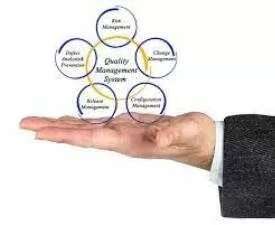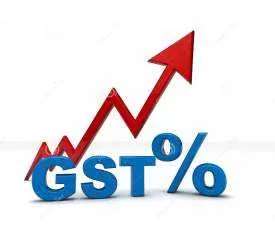Description
Course Name: Diploma in Library Assistant
Course Id: DLA/Q0001.
Education Qualification: 10th Class.
Duration: 370 Hrs.
How You will Get Diploma Certificate:
Step 1- Select your Course for Certification.
Step 2- Click on Enroll Now.
Step 3- Proceed to Enroll Now.
Step 4- Fill Your Billing Details and Proceed to Pay.
Step 5- You Will be Redirected to Payment Gateway, Pay Course and Exam Fee by Following Options.
Card(Debit/Credit), Wallet, Paytm, Net banking, UPI and Google pay.
Step 6- After Payment You will receive Study Material on your email id.
Step 7- After Completion of Course Study give Online Examination.
Step 8- After Online Examination you will get Diploma Certificate soft copy(Scan Copy) and Hard Copy(Original With Seal and Sign).
Step 9- After Certification you will receive Prospect Job Opportunities as per your Interest Area.
Online Examination Detail:
- Duration- 120 minutes.
- No. of Questions- 60. (Multiple Choice Questions).
- 10 Questions from each module, each carry 10 marks.
- Maximum Marks- 600, Passing Marks- 40%.
- There is no negative marking in this module.
| How Students will be Graded: | ||
| S.No. | Marks | Grade |
| 1 | 91-100 | O (Outstanding) |
| 2 | 81-90 | A (Excellent) |
| 3 | 71-80 | A (Very Good) |
| 4 | 61-70 | B (Good) |
| 5 | 51-60 | C (Average) |
| 6 | 41-50 | P (Pass) |
| 7 | 0-40 | F (Fail) |
Benefits of Certification:
- Government Authorized Assessment Agency Certification.
- Certificate Valid for Lifetime.
- Lifetime Verification of Certificate.
- Free Job Assistance as per your Interest Area.
Syllabus
Diploma in Library Assistant
Library Methods and Techniques
Research Methodology: Characteristics, Types Research Problem – Research Design Research Methods – Data Collection Methods – Research Methods Survey, Historical, case study – sampling – Types, Relevance, Hypothesis; Formation – Testing of Hypothesis – Data Analysis – Parametric- Non Parametric – usage of Statistical Package – SPSS – Bib excel, Statistics in Research; Specific Application of Measure of Central Tendency – Measure of Dispersion – Skegness, Measurement in Research; Scales – Test of good measurement – Construction of Likert and Semantic Differential Scales – Scale Validation – Preparation of Report and Style Manuals.
Library Management
Anglo-American Cataloguing Rules, Second Edition, Association for Computing Machinery, Foundations of Library and Information Science, Information Processing: Classification, Information Sources, Management of Libraries and Information, Information Technology, Information Processing: Classification, Academic Library Systems, Digital Libraries, Reference/Information Sources, Information Retrieval, Management of Libraries and Information Centres, Research Methodology, Work Experience and Library Tour, Information Systems and Services, Information Technology.
Library Classification Theory and Practice
Growth and Structure of Knowledge – Need and Purpose of Library Classification – General Theory of Library Classification – Species and Schemes of General Classification, Fundamental Categories: Basic facet, Isolate, Rounds & Levels – Principles of Facet Sequence and Helpful Sequence –Relations – Common Isolates – Canons of Classification, Notation-Need, Types and Functions – Mnemonics and Devices – Call Number, Book Number and Collection Number, Dewey decimal classification – Universal Decimal Classification– Colon Classification – Trends & Developments in Library Classification.
Library Cataloguing
Concept of library classification: Definition, Need and Purpose, Theory of subjects; basic, compound and complex subjects. Notation: Need, Purpose and qualities. Five Fundamental categories, Classification Schemes: Introduction to major schemes of classification: Colon Classification (CC), Dewey Decimal Classification (DDC),Universal Decimal Classification (UDC), Classification Theory: Cannons of Ranganathan, Development and trend in classification, role of computers, Concept of Call number: Class Number, Book Number, Collection Number, Concept of library catalogue: Definition, need, purpose and functions Forms and types of catalogue, Dictionary, Classified, Alphabetic-classified Catalogue; Card, Computerized and online (OPAC) Catalogues.
Information Services
Basics of Web and Network, Internet Technologies: TCP/IP, Higher-Level Internet Protocols, Internet-Connected Devices and Security, Web Design and Graphics, Web Publishing with the Hypertext Markup Language, Controlling Presentation with Styles, Spring Break – Enjoy, Web Programming & Technologies, XML Primer, Internet Content, Information Retrieval, Internet Search, Libraries and the Internet, Information, Definition, data, Knowledge, Nature and Characteristics of Information, Barrier to Communication, Sources of Information – Documentary and Non Documentary Sources, Types of Information Sources – Primary, Secondary and Tertiary Sources.
Laws of Library Sciences
First Law:, Second Law: Every Reader His /Her, Third Law: Every its Reader, Fourth Law: Save the Time of the Reader, Fifth Law: Library is a Growing Organism, New Insights and Wider Interpretation of Five Laws, describe the Five Laws of Library Science, explain the nature of work in library, documentation, and information services in tune with the guiding principles governed by the Five Laws, Laws are essentially general in nature, new insights and wider interpretation of five lows, Libraries serve humanity.








Reviews
There are no reviews yet.